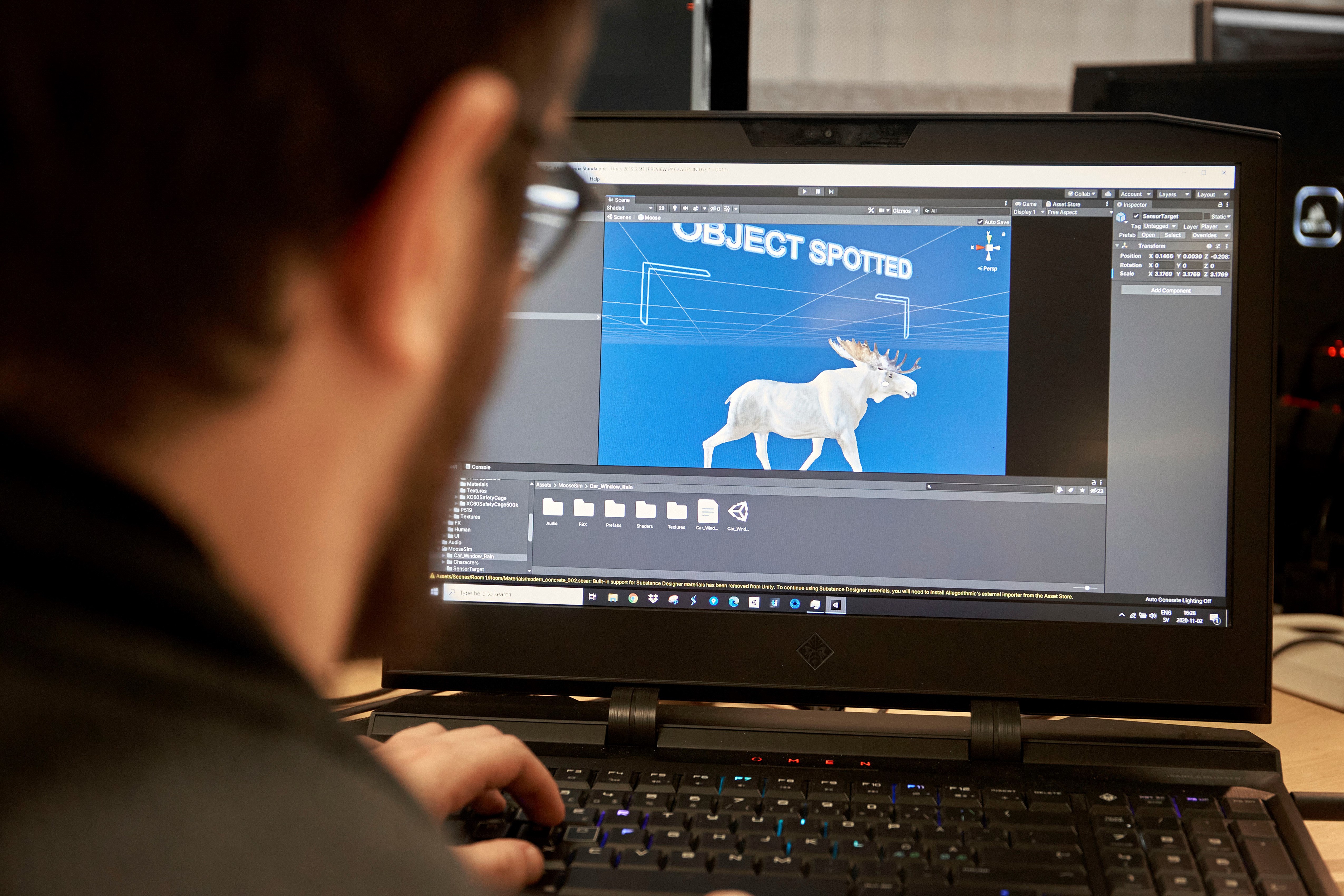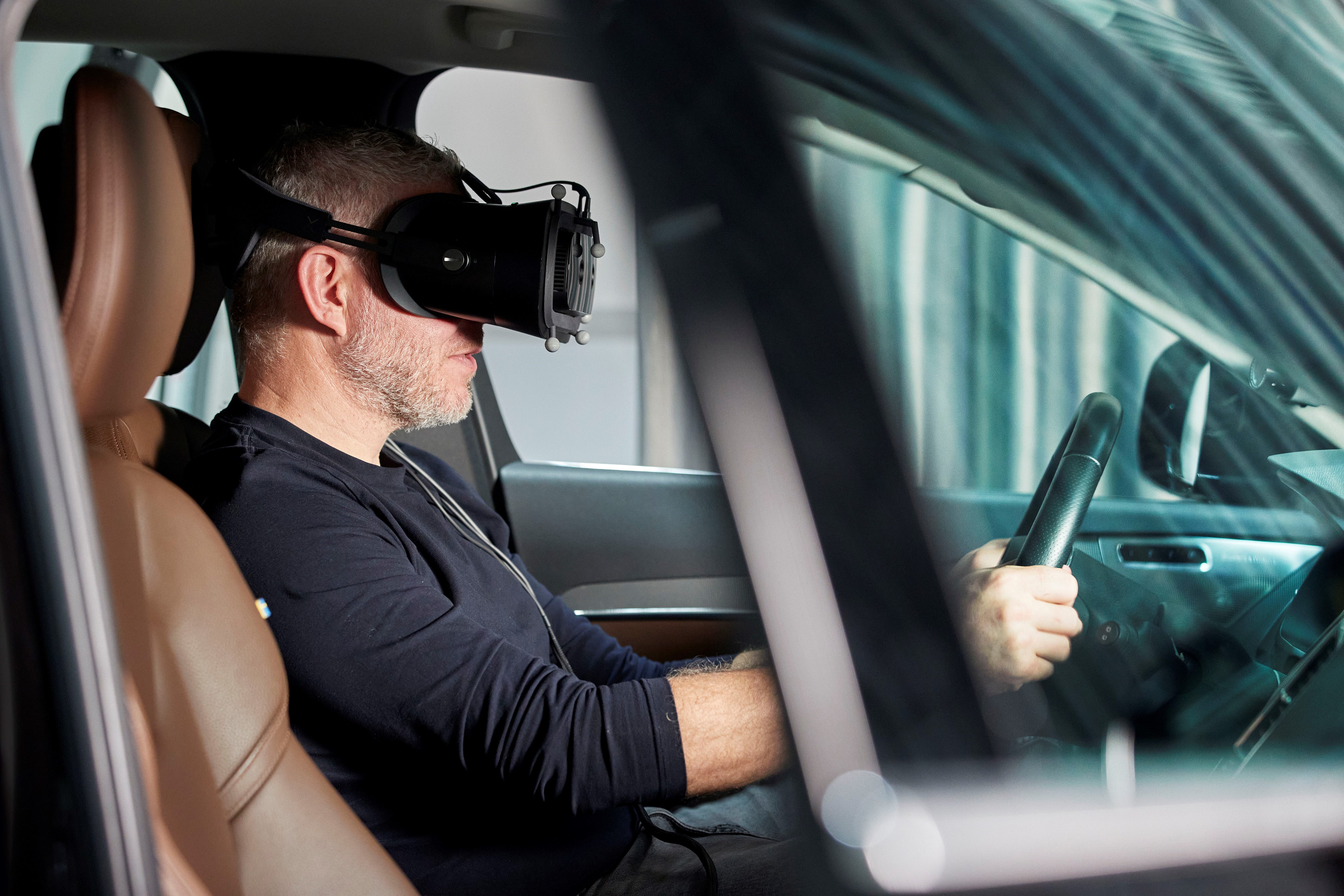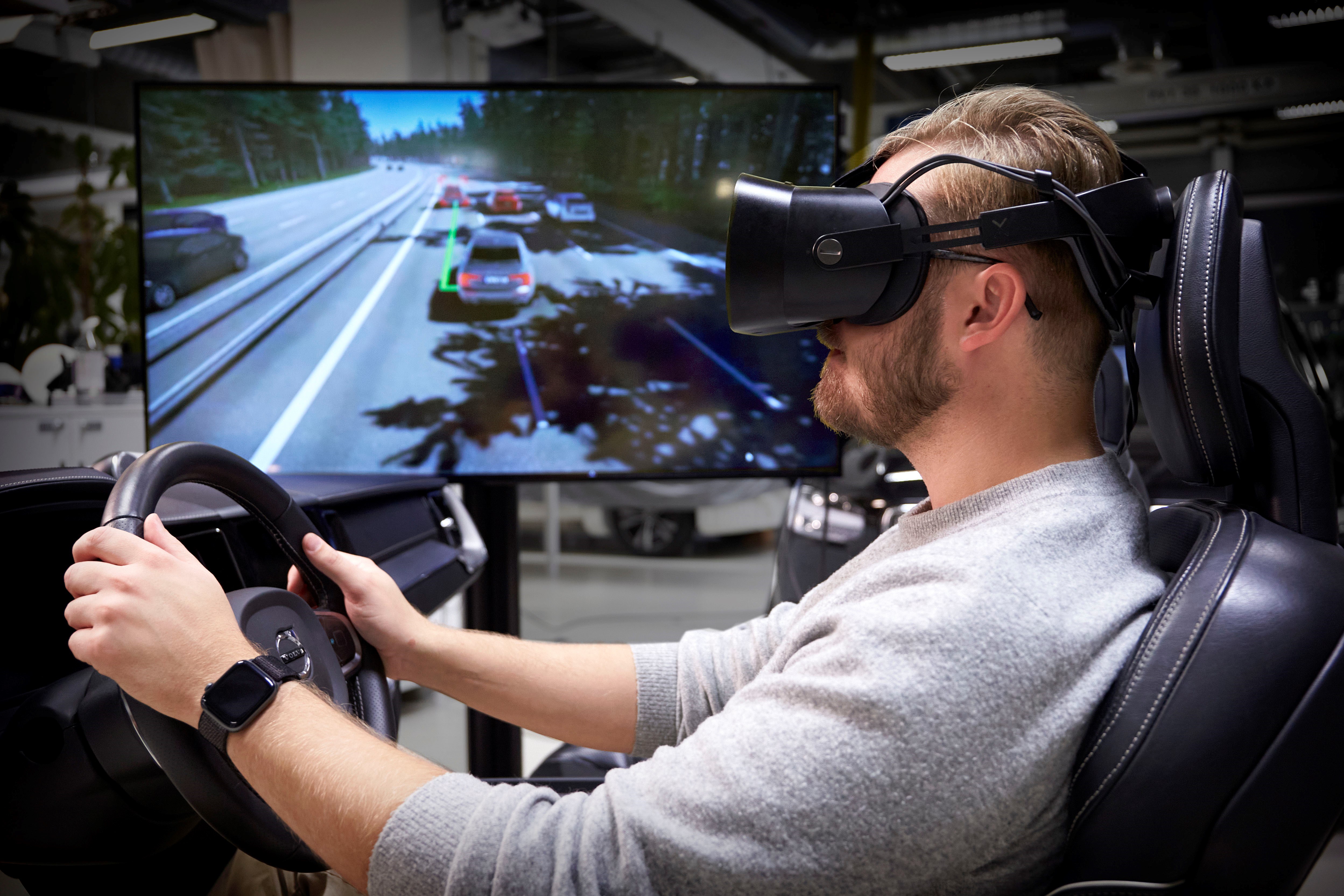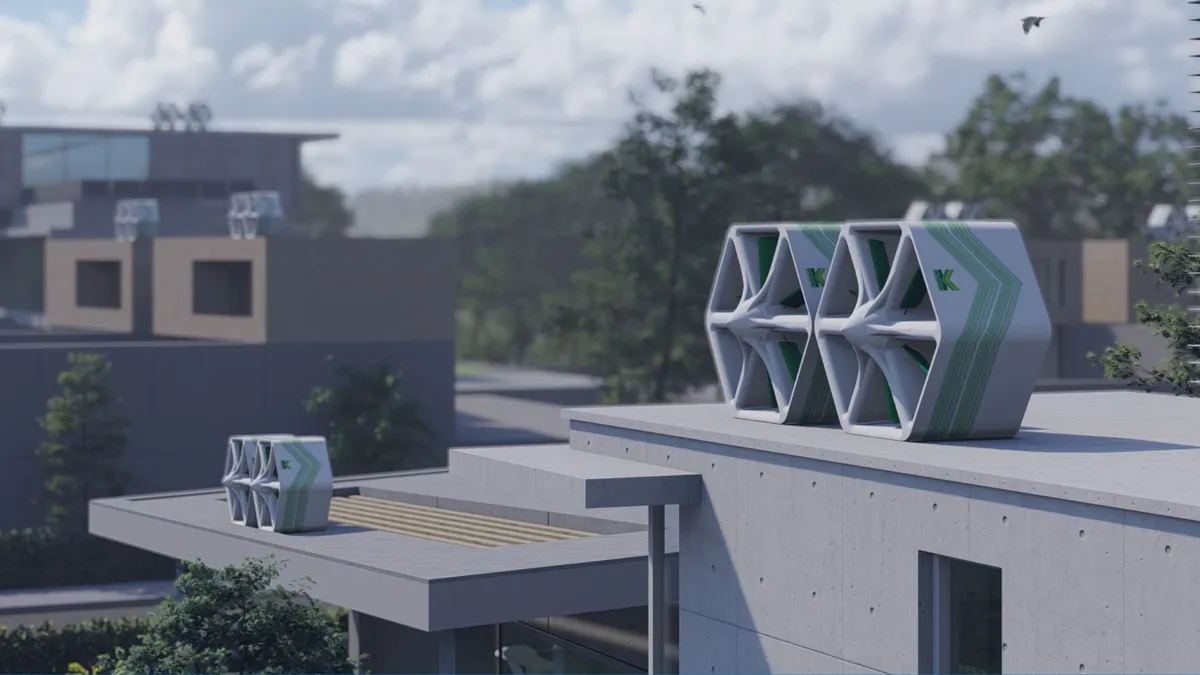Autonomous driving systems are very promising and also exciting, but safety remains the neuralgic factor that determines how successful they can be. Volvo has found a way to feed the machine learning algorithms that run its autonomous driving systems with actual human driving input, but not the typical one that comes from casual driving on the public roads. Instead, Volvo wants to train the system on “extreme” driving scenarios, like driving on a racing circuit or evading a moose that crosses the road.

To do this safely and also economically, Volvo’s engineers are seated on an XC90 wearing a virtual reality headset made by Varjo which runs a driving simulation. The input systems of the car are connected in real-time with the sim thanks to a system developed by “Open Innovation Arena”, while the custom virtual experiences run on the Unity game engine. So, in short, the testers are simply driving on a VR simulation, just as if they were playing a racing video game.

There’s an entire fleet of XC90 SUVs that takes part in these tests and a team of drivers who are feeding the systems with valuable test-driving data daily. The Unity game engine assets enable the engineers to set up different scenarios that would be rare, and extremely costly to set up in real-life tests, so this program is basically making the impossible attainable without breaking the bank.
As for how the simulation feels, Casper Wickman, the senior leader of the program stated that the scenarios look and feel totally real, whether they are simulating “boring” traffic scenarios or sporty downhill driving on tight mountain corners. Currently, they are heavily focused on collision avoidance, so they are experimenting a lot with scenarios of this kind, as well as how to return control back to the human driver in dangerous situations and do it effectively.







